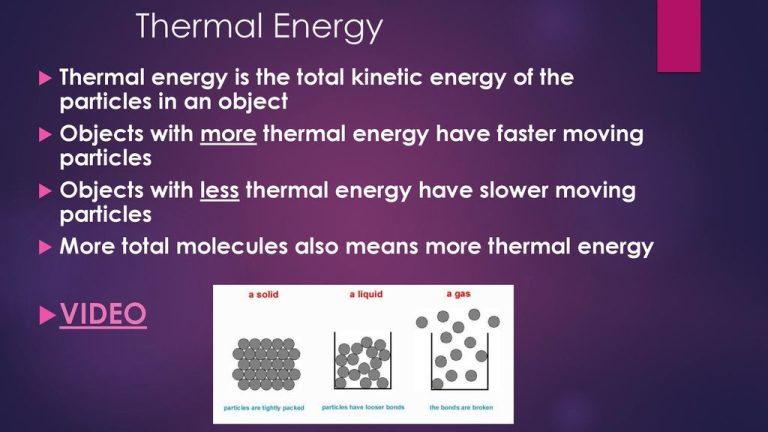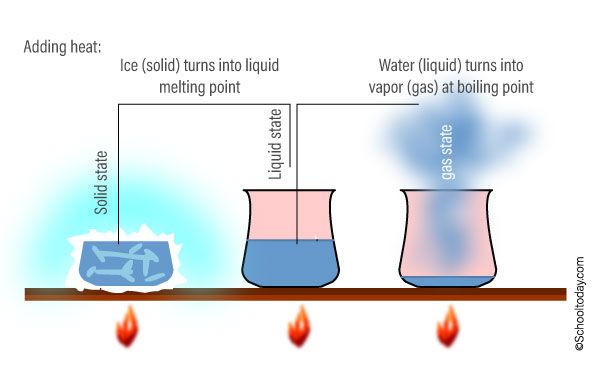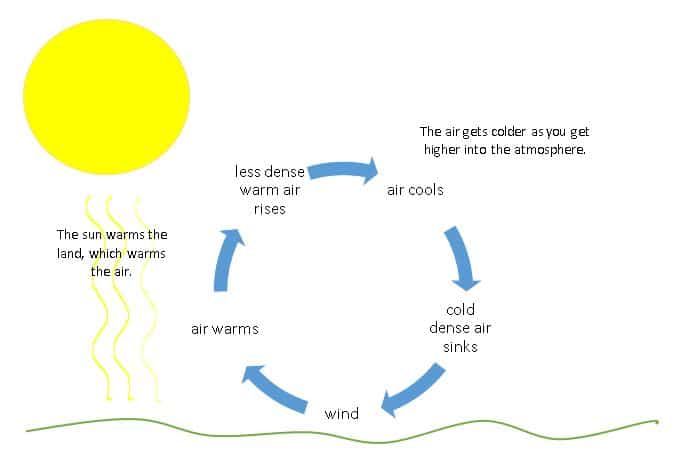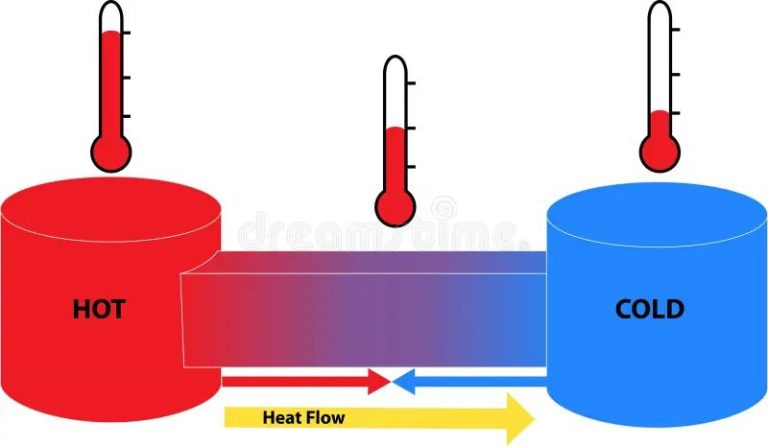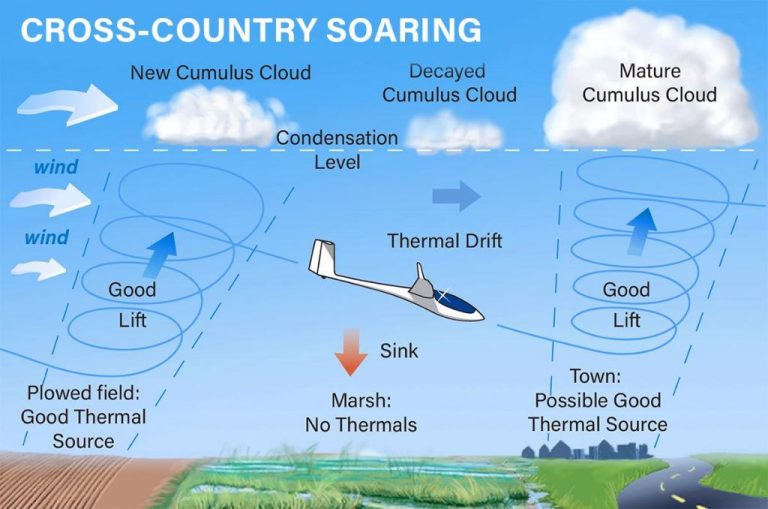What Is Thermal Energy In Biology?
Thermal energy refers to the internal energy present in molecules and atoms due to their temperature. It is directly related to the kinetic energy of particles and involved in heat transfer between objects or systems. In biology, thermal energy plays a critical role in physiological processes and biochemical reactions.
Organisms need to maintain appropriate levels of thermal energy for optimal functionality. If organisms get too hot or cold, the rates of chemical reactions in cells can change dramatically, potentially causing damage or death. As such, regulating thermal energy is essential for homeostasis.
Thermoregulation and thermogenesis are two key concepts in thermal biology. Thermoregulation refers to the ability of organisms to maintain body temperatures within certain limits, even when surrounded by different environmental temperatures. Thermogenesis is the generation of heat by organisms through metabolic activity like shivering and digesting food.
Understanding how organisms utilize, regulate, and generate thermal energy provides insight into evolution, ecology, physiology, and more. This overview covers the core principles of thermal energy in biology and its pivotal roles across biochemical, physiological, and ecological processes.
Sources of Thermal Energy for Organisms
Organisms obtain thermal energy from various sources in their environment and through internal metabolic processes. Some key sources of thermal energy in biology include:
Absorption of Electromagnetic Radiation – All organisms absorb electromagnetic radiation from the sun and surrounding environment. This includes visible light, ultraviolet radiation, and infrared radiation which heat up organisms. The amount of radiation absorbed depends on factors like pigmentation, insulation, and exposure to the radiation sources.
Metabolic Heat Generation – Cellular respiration and metabolic reactions within an organism’s body generate heat as a byproduct. The rate of heat generation depends on the metabolic rate and level of activity. This internal heat production is especially important for endothermic organisms.
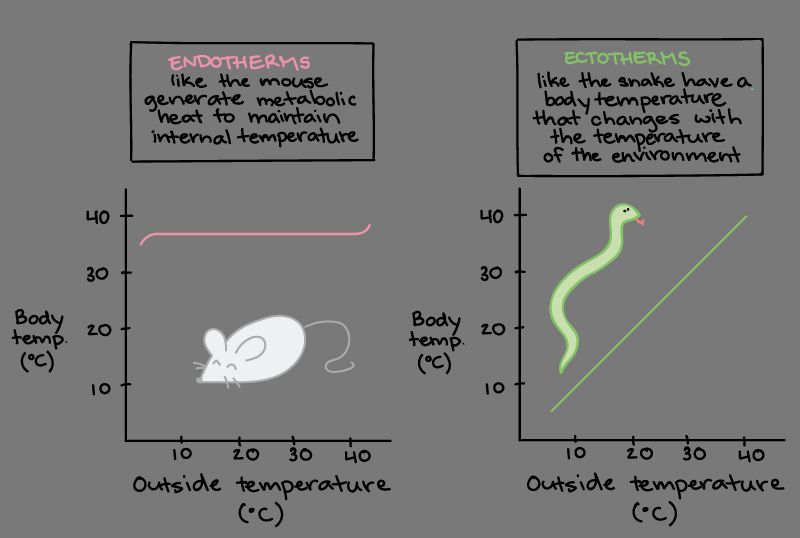
Geothermal Heat – Heat from the surrounding environment can transfer to organisms through conduction. Geothermal heat from underground and the earth’s core provides an external thermal energy source for some creatures. Ambient temperature of the habitat plays a key role in heat exchange.
Thermoregulation
Thermoregulation refers to the ability of organisms to maintain their body temperature within a tolerable range. Organisms can be classified as either endotherms or ectotherms based on how they regulate body temperature.
Endotherms like mammals and birds can generate heat internally through metabolic processes like thermogenesis. They use mechanisms like shivering, sweating, and panting to maintain optimal body temperature. Endotherms have adaptations like fur, feathers, fat layers, and countercurrent heat exchangers to retain body heat. Their circulatory system and integument work together to distribute heat, retain or expel heat as required.
In contrast, ectotherms like reptiles, fish, and invertebrates lack the ability to metabolically control body temperature. They depend on external heat sources like solar radiation. Ectotherms use mechanisms like basking, adjusting blood flow to the skin, changing coloration, and evaporative cooling to regulate temperature. Their metabolic rate is strongly influenced by ambient temperature.
The thermoregulatory abilities of organisms have implications for their physiology, behavior, ecology and evolution. Maintaining optimal body temperature is critical for biochemical reactions and overall functioning of organisms.
Thermogenesis
Thermogenesis refers to the biological processes that generate heat in organisms. There are three main forms of thermogenesis:
Non-shivering thermogenesis occurs primarily in brown adipose tissue. Brown fat cells contain a high concentration of iron-containing mitochondria that can uncouple electron transport from ATP synthesis to dissipate energy as heat. This allows rapid heat generation in response to cold exposure or overfeeding without muscle contraction. The uncoupling protein UCP1 mediates this process in brown fat.
Shivering thermogenesis involves the contraction of skeletal muscles to generate heat. The muscles rapidly contract in small movements that do not produce mechanical work but increase metabolic activity and heat production. Shivering allows the body to maintain core temperature in response to cold before non-shivering mechanisms activate.
In biochemical regulation, thermogenic processes are controlled by the sympathetic nervous system and hormones. Norepinephrine released during cold exposure triggers lipid metabolism and UCP1 activity. Thyroid hormones also upregulate heat-generating metabolic pathways. The hormone irisin released from muscle may stimulate browning of white adipose tissue.
Heat Transfer in Organisms
Organisms gain and lose heat through a variety of mechanisms, including conduction, convection, radiation, and evaporation. Here is an overview of some key heat transfer processes in biology:
Conduction involves the transfer of heat between two objects in direct contact with each other. For example, organisms can gain or lose heat by direct contact between their bodies and hot or cold surfaces.
Convection is the transfer of heat by the movement of liquids or gases. Animals rely on internal convection via blood circulation to distribute heat around their bodies. Convection also occurs on the surface of organisms via air or water currents.
Radiation is the emission of infrared radiation from an organism’s body. This allows heat to be gained or lost remotely without direct contact. Radiation plays a key role in temperature regulation.
Evaporation helps cool organisms through the energy required for liquid water to transition to water vapor. Sweating and panting utilize evaporation to shed excess heat.
Animals also employ various insulation mechanisms to regulate heat transfer and maintain body temperature. Features like fur, feathers, blubber, and hairs help reduce conductive heat loss. Vasoconstriction can regulate blood circulation to extremities to reduce internal heat transfer.
Thermal Adaptations
Organisms have evolved numerous adaptations to help regulate their body temperatures in response to thermal environments. Some key examples of thermal adaptations include:
Countercurrent heat exchange – Organisms like tuna have blood vessels that flow in opposite directions to minimize heat loss. As warm arterial blood flows to the gills, it passes by cold venous blood and heat is exchanged between the flows.
Gigantothermy – Large body size helps some organisms like elephants maintain a fairly stable internal temperature. Their thermoregulatory mechanisms are enhanced simply due to having a smaller surface area to volume ratio.
Regional heterothermy – Animals like penguins and dolphins conserve heat by having areas of high insulation like fat layers while keeping appendages like flippers cooler.
Adaptations in appendages, body size and shape – Ears, tails, beaks and other appendages serve as radiators to dissipate excess body heat. Body shape and surface area to volume ratio impacts heat dissipation.
Acclimatization – Animals can undergo changes over time to improve their thermoregulation. For example, repeated exposure to heat stimulates physiological changes that allow animals to better handle hot environments.
Thermal Effects on Biochemistry
Temperature has a significant impact on the biochemistry of living organisms. Enzyme kinetics, membrane fluidity, and protein folding are all influenced by temperature.
Enzymes are proteins that catalyze biochemical reactions. The rates of enzymatic reactions increase with rising temperatures, up to an optimal temperature where enzyme activity peaks. However, excessive heat denatures enzymes by altering their three-dimensional structure and compromises their catalytic function. Organisms have evolved various mechanisms to maintain optimal temperatures for enzyme activity.
Cell membranes are also affected by temperature. Increased temperature enhances membrane fluidity by disordering the hydrophobic lipid bilayer. This can alter membrane permeability and disrupt membrane proteins embedded within the membrane. To counteract excessive fluidity, organisms modify membrane lipid composition in response to temperature change.
Proper folding of proteins into precise three-dimensional conformations is essential to their stability and activity. Heat causes proteins to unfold or misfold. Cells have molecular chaperones and other systems to facilitate correct protein folding and refolding. There are also heat shock proteins that help stabilize proteins and prevent aggregation of misfolded proteins under thermal stress.
In summary, biochemical processes are finely tuned to operate within limited temperature ranges. Organisms have evolved various structural and functional adaptations to maintain proper enzyme kinetics, membrane fluidity, and protein folding in the face of thermal fluctuations.
Thermal Ecology
The thermal ecology of an organism refers to how it interacts with heat sources and sinks in its environment. All organisms exchange heat with their surroundings and must maintain body temperatures within a certain range to survive. Thermal ecology examines how ambient temperatures affect organisms and how organisms behaviorally or physiologically regulate body temperature.
Environmental heat sources include solar radiation, geothermal heat from the ground, heat from weather systems, and heat generated by other organisms. Heat sinks in the environment include shade, pools of water, burrows, and low-temperature microclimates. The amount of heat gained or lost by an organism depends on external temperatures as well as morphological, physiological, and behavioral adaptations.
Many organisms rely on behavioral thermoregulation to maintain optimal body temperatures. This involves orienting the body relative to the sun, like lizards angling themselves perpendicular to the sun’s rays to minimize heat gain. Seeking out habitats and microclimates with more favorable temperatures is also a behavior to regulate heat. Snakes and other burrowing animals escape high surface temperatures by retreating to cooler underground burrows. Changing posture to increase or decrease exposed surface area can also modulate heat exchange.
An organism’s geographic location and regional climate plays a major role in its thermal ecology. Desert organisms have adapted to extremely hot and dry conditions. Tropical species are adapted to generally warm and stable temperatures. Polar organisms have adaptations to prevent freezing and maintain metabolism even at frigid temperatures. Understanding an organism’s thermal ecology requires examining its environment and evolutionary context.
Applied Thermal Biology
Thermal biology has many important practical applications in fields like medicine, agriculture, and conservation.
Cryobiology
Cryobiology is the study of life at low temperatures. Understanding how organisms respond to extreme cold has enabled advances like cryopreservation of cells, tissues, organs and organisms. Cryopreservation allows long-term storage and transportation of biological samples at liquid nitrogen temperatures.
Food Preservation
Controlling temperature is crucial for preserving foods and avoiding spoilage. Thermal processing techniques like pasteurization, canning, and freeze-drying help destroy microbes and inactivate enzymes to extend shelf life. Knowing the thermal stability of foods guides proper storage and preparation.
Circadian Rhythms
Daily cycles of temperature coordinate circadian clocks that control sleep, metabolism, and behavior in organisms. Abnormal thermal cycles from shift work or climate change can disrupt these rhythms and cause health problems. Understanding thermal biology helps predict such risks.
Climate Change Impacts
Rising global temperatures are forcing organisms to adapt, migrate, or face extinction. Thermal biologists study how climate change alters habitats, biodiversity, and ecosystem functions. This informs conservation strategies for endangered species.
Medical Applications
Manipulating temperature is useful in medicine. Cryosurgery ablates diseased tissue by freezing. Hyperthermia therapy raises tumor temperatures to damage cancer cells. Thermal biology guides safer, more effective thermal therapies.
Conclusion
In summary, this article covered several key topics related to the role of thermal energy in biology. We discussed the various sources of heat that organisms rely on, including thermogenesis through metabolism and absorption of solar radiation. Regulation of body temperature through physiological and behavioral mechanisms like sweating, shivering, and seeking shade are essential thermal adaptations. Heat transfer between organisms and their environments through conduction, convection and radiation were also explored.
Thermal energy impacts organisms on scales from biochemistry to entire ecosystems. Enzymes and cellular functions are affected by temperature, influencing biochemical reaction rates. Many organisms have specialized adaptations that allow them to thrive in extreme thermal environments. From a population perspective, the ambient temperature defines the habitats and climatic ranges where species can persist.
While this article provided an overview of thermal biology, many questions remain for future research. Scientists are still investigating the precise molecular mechanisms of thermal sensing and response. More work is needed to fully understand heat exchange through an organism’s surface to its environment. The impacts of climate change on ecosystems is an area of active study, as changing thermal patterns shift habitats and challenge species survival.
In conclusion, thermal energy is a fundamental driver and constraint on biological processes at all levels of organization. Further exploring the complex influences of temperature on living systems through an integrative thermal biology framework can provide insights into evolution, physiology, and ecology while informing biodiversity conservation and climate change mitigation efforts.


